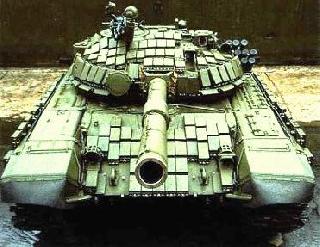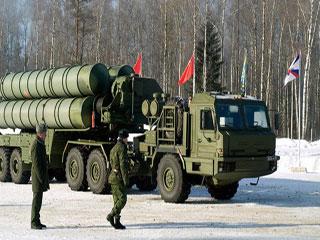
The T-80 Main Battle Tank of Russia.
KHOTKOVO, RUSSIA (AFP): They may look like real tanks and missiles, but some of the weapons in Russia's arsenal may not all be what they seem.
For the army is making increasing use of inflatable replicas – decoys deployed in a cunning attempt to deceive potential enemies.
In a workshop in Moscow's suburb Khotkovo, employees of inflatable equipment company Rusbal sew the fabric used to create fake weapons for their main customer – the Russian army.
Established in 1993, Rusbal replicates military equipment, such as T-80 tanks, S-300 missiles or fighter jets, for an undisclosed price, but also manufactures inflatable castles and other toys for children.
"These machines are effective in deceiving the enemy, and they protect the real equipment," the Rusbal plant director, Victor Talanov, told AFP.
"This kind of technology has existed in the army for a long time, since World War II," he said.
In another recent example, the Serbian army used similar decoys during the country's bombardment by NATO forces in 1999 and the Alliance actually destroyed fewer genuine targets than it thought.
Talanov said the idea to work for military belonged to his father, Rusbal's CEO who worked in the Soviet era for the military-industrial complex and later developed links with the Russian army.
"He realised that with these technologies, we can solve problems in the military field."
Rusbal's proud employees said it's very difficult to distinguish a real tank from a fake one.
For example, the equipment they produce has the same thermal footprint as the weapons it imitates.
"From the height of a 10-storey building, if a real tank and a false one stand side by side, they make almost no difference.
“Our machines emit the same heat and reflect radio waves in the same way as real ones," said Lyudmila Stepanova, Rusbal's chief technology expert.
Another bonus is that they are easy to deploy – a tank inflates in minutes.
According to Rusbal, Russian technology of manufacturing fake weapons is far more innovative and developed than in other countries, such as China or Canada, which also use similar equipment.
A Russian-manufactured mock tank weighs only 90 kilograms against 300 kilograms for its European analogue.
"Before, we had to inflate a model and to bung it up like a mattress. Now, air is blown continuously into the tank.
This allows us to use lighter materials, which inflate faster and are more resistant to cuts," Talanov said.
 Previous Article
Previous Article Next Article
Next Article










The Indian Air Force, in its flight trials evaluation report submitted before the Defence Ministry l..
view articleAn insight into the Medium Multi-Role Combat Aircraft competition...
view articleSky enthusiasts can now spot the International Space Station (ISS) commanded by Indian-American astr..
view article